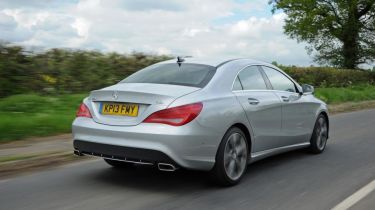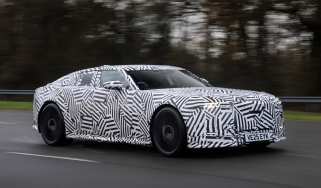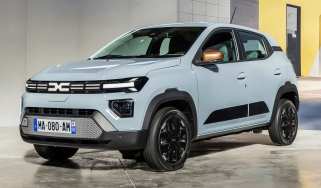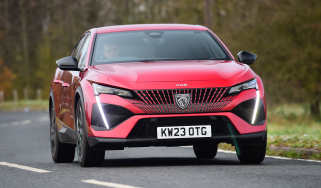Used Mercedes CLA (Mk1, 2013-2019) review - How much will it cost?
It’s not the cheapest used saloon you can buy, but the standard equipment justifies the price
When it was new, the Mercedes CLA range started at around £24,000, but buyers didn’t get a lot of kit for their money, and the prices quickly started to rise with a few options
Prices
You can buy an early Mercedes CLA for around £10,000. It’s likely to be an ex-fleet car with a diesel engine, but buying a high-mileage diesel is preferable as it reduces the chances of an expensive diesel particulate filter (DPF) replacement.
Prices for a post-facelift CLA start from around £15,000, while you’ll need to find at least £20,000 for a Mercedes-AMG CLA 45 4MATIC. Its relative rarity, and the fact that it arrived two years after the standard CLA, means that Shooting Brake prices are higher. Bank on spending at least £15,000 for even a basic CLA Shooting Brake.
You can check out the latest used prices for the Mercedes CLA on our Find a Car service or value a specific model using our Free Car Valuation tool.
Economy and CO2 emissions
It’s not surprising that the most efficient version of the Mercedes CLA is diesel-powered, and our pick of the range for running costs overall is the CLA 220 d. This DCT auto-equipped model claims 67.3mpg fuel economy from its 2.1-litre engine and emissions of 106g/km.
Used - available now

2019 Mazda
CX-5
68,863 milesManualDiesel2.2L
Cash £11,600
2023 Tesla
Model Y Premium
35,487 milesAutomaticElectric
Cash £20,800
2022 MG
HS
39,200 milesManualPetrol1.5L
Cash £12,350
2020 MG
ZS ELECTRIC
14,990 milesAutomaticElectric
Cash £11,200The lower-powered CLA 200 d has the same 67.3mpg fuel figure with a manual gearbox, but emissions are slightly higher at 109g/km. Add an auto gearbox and the CLA 200 d has a claimed 70.6mpg and 105g/km of CO2.
The 122bhp 1.6-litre petrol engine in the CLA 180 emits 128g/km of CO2 and promises official 51.4mpg economy when fitted with the six-speed manual gearbox. Buyers are looking at improved figures of 124g/km and 52.3mpg with the automatic box.
It’s not surprising that the 2.0-litre petrol engine in the performance-focused CLA 250 AMG and hot Mercedes-AMG CLA 45 is the least efficient in the range. The CLA 250 AMG claims fuel economy of 42.2mpg and emissions of 156g/km, while adding the DCT auto results in figures of 45.6mpg and 143g/km. Add 4MATIC four-wheel drive, and economy is claimed at 41.5mpg, while emissions are 160g/km.
Even though the AMG 45 model has sizzling straight-line pace, its figures of 40.9mpg and 162g/km aren't much worse than the CLA 250 AMG 4MATIC. That's on 18-inch wheels; add the 19-inch rims and economy drops to 38.7mpg and emissions rise to 171g/km.
Running costs
All CLAs need servicing every 12 months or 15,500 miles, alternating between minor and major. Costs vary, but you can get quotes from mymercedesservice.co.uk.
Expect £250 for a minor and £400 for a major service for diesels; petrols are closer to £240/£340. The fourth service is £700-£750, which includes air and fuel filters. Brake fluid is needed every two years (£90), coolant every 10 (£225), while autos need a £400 service every five years. All engines are chain-driven.
Depending on spec, the line-up kicks off in insurance groups 20 to 24 for the entry-level Mercedes CLA 180 petrol models. The CLA 200 d diesel sits in around group 24, with the CLA 220 d in group 27.
If you have to ask how much it costs to insure a Mercedes-AMG CLA 45, you probably can’t afford the premiums for this high-performance group 45 rocketship.
Insurance premiums start off lower for the Audi A3, as basic versions feature smaller engines, but like-for-like models are roughly in the same ballpark as the Mercedes.
The appeal of Mercedes’ three-pointed star badge should ensure the CLA resists depreciation reasonably well. Our experts predict that diesel models are likely to hold on to their value best, while those with an automatic transmission will retain more of their price than manual versions.



